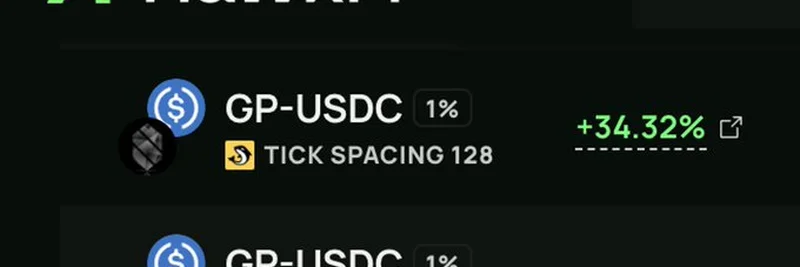If you’re into the wild world of decentralized finance (DeFi), you’ve probably heard about liquidity pools and how they can boost your crypto earnings. Recently, a tweet from Bradydon | 🐣HawkFi.ag caught our eye at Meme Insider, showcasing the results of a 5-day liquidity pool (LP) experiment with the GP-USDC pair. Let’s break it down and see what this means for meme token enthusiasts and DeFi practitioners!
The Experiment Breakdown
Bradydon ran a 5-day test using HawkFi’s automated liquidity pools, comparing performance across three popular platforms: Orca, Meteora, and Raydium. The setup? A GP-USDC pair with a clever “multiday LP cook setup” that included autorebalancing (adjusting the price range automatically) and autocompounding (reinvesting profits). Here’s how it shook out:
- Orca: A whopping +34.32% gain with a tick spacing of 128.
- Meteora: A solid +13.27% gain with a bin step of 250.
- Raydium: Results are still pending, but it’s already trailing based on earlier experiments.
What’s cool here is that both Orca and Meteora beat simply holding the tokens (spot HODLing), proving that active LP strategies can pay off big time.
Why Orca Took the Lead
So, why did Orca come out on top with that impressive 34.32%? The secret sauce seems to be HawkFi’s autorebalancing feature. This tool automatically adjusts your liquidity range to stay in the profitable zone as token prices shift—think of it like a self-driving car for your investments! Orca’s dynamic fee structure, which adapts to market conditions, likely gave it an edge over Meteora’s more static approach. Meteora still did well at +13.27%, but it couldn’t match Orca’s agility.
This aligns with findings from other DeFi experiments, like the one by bizzy quoted in the tweet, where Orca also edged out Meteora and Raydium in a similar LP test. It looks like Orca’s tech is hitting the sweet spot for yield farming right now.
What Are Liquidity Pools, Anyway?
If you’re new to this, liquidity pools are like shared pots of tokens that DeFi platforms use to facilitate trading without traditional middlemen. By adding your tokens to a pool (like GP-USDC), you earn a cut of the trading fees. With automated tools like HawkFi’s, you don’t have to babysit your investment— the platform does the heavy lifting by rebalancing and compounding your earnings.
Implications for Meme Token Fans
At Meme Insider, we’re all about spotting trends in the meme token space, and this experiment hints at a bigger story. As meme tokens like GP (if it’s a meme-inspired token) gain traction, platforms like HawkFi could become go-to tools for maximizing returns. The autorebalancing and autocompounding features are game-changers, especially for volatile assets where price swings are the norm.
What’s Next?
Raydium’s results are still on the horizon, so it’ll be interesting to see if it can catch up. Bradydon also hinted at more experiments with different pairs and fee settings, which could shake up the leaderboard. If you’re a blockchain practitioner or just a crypto curious, keep an eye on HawkFi’s platform for updates—this could be a goldmine for learning and earning.
Final Thoughts
This 5-day GP LP experiment shows how powerful automated liquidity pools can be, with Orca leading the pack at +34.32%. Whether you’re diving into DeFi for the first time or optimizing your meme token portfolio, tools like HawkFi’s autorebalancing setup are worth exploring. Got questions or your own LP tips? Drop them in the comments—we’d love to hear from you!



